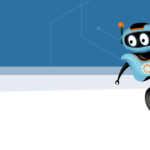Among the latest developments in the field of Artificial Intelligence (AI), is HackerGPT, an AI model designed specifically for cybersecurity professionals and Pentesters. This tool leverages advanced machine learning algorithms to identify vulnerabilities, simulate cyberattacks, and provide insights into potential threats. However, while its capabilities are groundbreaking, HackerGPT also comes with significant limitations that must be understood and mitigated.
What is HackerGPT?
HackerGPT is an AI-driven platform designed to assist cybersecurity experts by automating and enhancing various tasks related to vulnerability assessment, threat detection, and incident response. Built upon the architecture of large language models like OpenAI’s GPT, HackerGPT is tailored to comprehend and generate technical content related to cybersecurity.
Core Functions and Capabilities
- Vulnerability Scanning and Analysis:
HackerGPT can scan codebases, networks, and systems for known vulnerabilities, offering detailed reports on potential weaknesses. By understanding the context in which certain vulnerabilities exist, it can suggest specific patches or mitigation strategies. - Penetration Testing Simulations:
One of the standout features of HackerGPT is its ability to simulate cyberattacks. The AI can mimic the behavior of various threat actors, testing the resilience of systems against different types of attacks. This simulation helps organizations prepare for real-world scenarios by identifying and addressing vulnerabilities before they can be exploited. - Threat Intelligence Gathering:
HackerGPT can parse through vast amounts of data from cybersecurity feeds, reports, and databases to identify emerging threats. It can analyze patterns in attack methods and predict potential targets or industries that may be at risk. - Incident Response Support:
During a cybersecurity incident, HackerGPT can assist by providing real-time analysis of the attack vectors, suggesting containment strategies, and even automating certain response actions. Its ability to process and understand large volumes of data quickly makes it an invaluable tool in high-pressure situations. - Educational Tool for Cybersecurity Training:
HackerGPT can serve as an interactive training tool, generating realistic cyberattack scenarios for training purposes. It can simulate a range of threat environments, helping trainees develop skills in identifying and mitigating cyber threats.
And more … !
Limitations of HackerGPT
Despite its advanced capabilities, HackerGPT has several limitations that must be considered.
- Over-Reliance on Existing Data:
HackerGPT is heavily reliant on existing data to function effectively. It excels at identifying vulnerabilities and threats that are well-documented in its training data. However, when confronted with novel attack vectors or zero-day vulnerabilities, HackerGPT may struggle to provide accurate assessments or mitigation strategies. This limitation underscores the importance of human oversight in cybersecurity operations. - Potential for Misuse:
While HackerGPT is designed for defensive cybersecurity purposes, there is a risk that it could be misused by malicious actors. In the wrong hands, the tool could be employed to identify and exploit vulnerabilities rather than fix them. Ensuring that access to HackerGPT is tightly controlled and monitored is crucial to prevent its misuse. - Ethical Concerns:
The ability of HackerGPT to simulate cyberattacks raises ethical concerns. While these simulations are valuable for training and preparation, there is a fine line between using the tool for defense and inadvertently aiding offensive cyber operations. Organizations using HackerGPT must establish clear ethical guidelines to ensure that its use aligns with legal and moral standards. - False Positives and Negatives:
As with any AI-driven tool, HackerGPT is not immune to errors. It may generate false positives, identifying benign activities as threats, or false negatives, missing actual vulnerabilities or attacks. These errors can lead to wasted resources or, worse, leave critical vulnerabilities unaddressed. Continuous fine-tuning and validation by cybersecurity experts are necessary to minimize these risks. - Lack of Contextual Understanding:
While HackerGPT is capable of processing vast amounts of technical data, it may lack the contextual understanding that human experts bring to cybersecurity. For instance, it might suggest a technically correct but practically infeasible solution. Human intervention is needed to assess the practicality and broader implications of HackerGPT’s recommendations. - Privacy and Data Security:
In order to function effectively, HackerGPT may need access to sensitive data, raising concerns about privacy and data security. Organizations must carefully manage and limit the data accessible to the tool, ensuring compliance with privacy regulations and protecting sensitive information from unauthorized access.
The Future of HackerGPT
HackerGPT represents a significant step forward in the integration of AI into cybersecurity. As the tool continues to evolve, we can expect enhancements in its capabilities, particularly in areas like real-time threat detection and automated incident response. However, its limitations, particularly concerning ethical use and the potential for misuse, will remain central challenges.
For organizations looking to leverage HackerGPT, the key to success lies in balancing the power of AI with human expertise. By using HackerGPT as a complementary tool rather than a replacement for skilled cybersecurity professionals, organizations can enhance their security posture while mitigating the risks associated with AI-driven systems.
Conclusion
HackerGPT is a powerful and versatile tool designed to revolutionize the way we approach cybersecurity. Its ability to automate complex tasks, simulate real-world threats, and provide actionable insights makes it an invaluable asset in the fight against cybercrime. However, its limitations, including the potential for misuse and the risk of errors, mean that it must be used with caution and under the guidance of experienced cybersecurity professionals. As we move forward, the role of AI in cybersecurity will undoubtedly grow, and tools like HackerGPT will be at the forefront of this evolution—provided we manage their risks and ethical implications responsibly.












